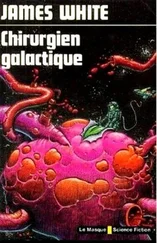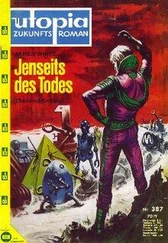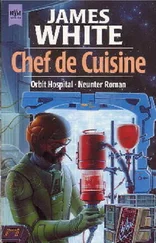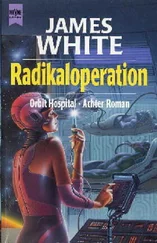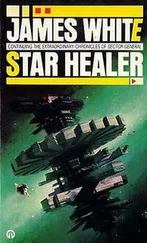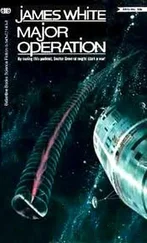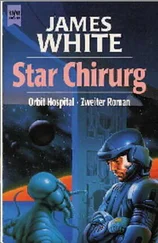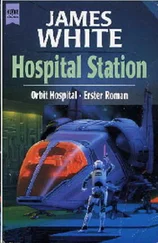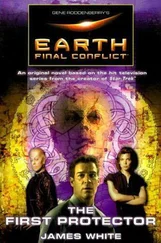On their home worlds these were all very important people, medically speaking. It was only at Sector General that they were new boys, and for some of them the transition from acknowledged master to lowly pupil might be difficult, so that large quantities of tact were necessary when handling them at this stage. Later, however, when they began to settle in, they could be bawled out for their mistakes like anyone else.
“I propose to start our tour at Reception,” Conway went on, “where the problems of admittance and initial treatment are dealt with. Then, providing the environment does not require complex protective arrangements for ourselves and the patient’s condition is not critical, we will visit the adjacent wards to observe examination procedures on newly-arrived patients. If anyone wants to ask questions at any time, feel free to do so.
“On the way to Reception,” he continued, “we will use corridors which may be crowded. There is a complicated system of precedence governing the rights of way of junior and senior medical staff, a system which you will learn in time. But for the present there is just one simple rule to remember. If the being coming at you is bigger than you are, get out of its way.”
He was about to add that no doctor in Sector General would deliberately trample a colleague to death, but thought better of it. A great many e-ts did not have a sense of humor and such a harmless pleasantry, if taken literally, could lead to endless complications. Instead he said, “Follow me, please.”
Conway arranged for the five AACPs, who were the slowest-moving of the group, to follow himself and set the pace for the others. After them came the two Kelgians whose undulating gait was only slightly faster than the vegetable life-forms preceding them. The chlorine-breather came next and the Creppelian octopoid brought up the rear, the bubbling noise from its suit giving Conway an audible indication that his fifty-yard long tail was all in one piece.
Strung out as they were there was no point in Conway trying to talk, and they negotiated the first stage of the journey in silence-three ascending ramps and a couple of hundred yards of straight and angled corridors. The only person they met coming in the opposite direction was a Nidian wearing the armband of a two-year intern. Nidians averaged four feet in height so that nobody was in any danger of being trampled to death. They reached the internal lock which gave access to the water breather’s section.
In the adjoining dressing room Conway supervised the suiting-up of the two Kelgians, then climbed into a light-weight suit himself. The AACPs said that their vegetable metabolism enabled them to exist under water for long periods without protection. The Illensan was already sealed against the oxygen-laden air so that the equally poisonous water did not worry it. But the Creppelian was a water-breather and wanted to take its suit off-it had eight legs which badly needed stretching, it said. But Conway vetoed this on the grounds that it would only be in the water for fifteen minutes at most.
The lock opened into the main AUGL ward, a vast, shadowy tank of tepid green water two hundred feet deep and five hundred feet across. Conway quickly discovered that moving the trainees from the lock to the corridor entrance on the other side was like trying to drive a three dimensional herd of cattle through green glue. With the single exception of the Creppelian they all lost their sense of direction in the water within the first few minutes. Conway had to swim frantically around them, gesticulating and shouting directions, and despite the cooling and drying elements in his suit the interior soon became like an overheated Turkish bath. Several times he lost his temper and directed his charges to a place other than the corridor entrance.
And during one particularly chaotic moment an AUGL patient-one of the forty-foot, armored, fish-like natives of Chalderescol Il-swam ponderously toward them. It closed to within five yards, causing a near panic among the AACPs, said “Student!” and swam away again. Chalders were notoriously antisocial during convalescence, but the incident did not help Conway’s temper any.
It seemed much longer than fifteen minutes later when they were assembled in the corridor at the other side of the tank. Conway said, “Three hundred yards along this corridor is the transfer lock into the oxygen section of Reception, which is the best place to see what is going on there. Those of you who are wearing protection against water only will remove their suits, the others will go straight through …
As he was swimming with them toward the lock the Creppelian said to one of the AACPs, “Ours is supposed to be filled with superheated steam, but you have to have done something very bad to be sent there.” To which the AACP replied, “Our Hell is hot, too, but there is no moisture in it at all …”
Conway had been about to apologize for losing his temper back in the tank, fearing that he might have hurt some sensitive extra-terrestrial feelings, but obviously they hadn’t taken what he’d said very seriously.
Through the transparent wall of its observation gallery, Reception showed as a large, shadowy room containing three large control desks, only one of which was currently occupied. The being seated before it was another Nidian, a small humanoid with seven-fingered hands and an overall coat of tight, curly red fur. Indicator lights on the desk showed that it had just made contact with a ship approaching the hospital.
Conway said, “Listen …”
“Identify yourself, please,” said the red teddy bear in its staccato, barking speech-which was filtered through Conway’s Translator as flat, toneless English and which came to the others as equally toneless Kelgian, Illensan or whatever. “Patient, visitor or staff, and species?”
“Pilot, with one passenger-patient aboard,” came the reply. “Both human.”
There was a short pause, then; “Give your physiological classification, please, or make full-vision contact,” said the Nidian with a very Earth human wink toward the watchers in the gallery. “All intelligent races refer to their own species as human and think of all others as being nonhuman. What you call yourself has no meaning so far as preparing accommodation for the patient is concerned …
Conway muted the speaker which carried the conversation between ship and receptionist into the gallery and said, “This is as good a time as any to explain our physiological classification system to you. Briefly, that is, because later there will be special lectures on this subject.”
Clearing his throat, he began, “In the four-letter classification system the first letter indicates the level of physical evolution, the second denotes the type and distribution of limbs and sense organs and the other two the combination metabolism and pressure and gravity requirements, which in turn give an indication of the physical mass and form of protective tegument possessed by the being. I must mention here, in case any of you might feel inferior regarding your classification, that the level of physical evolution has no relation to the level of intelligence …
Species with the prefix A, B and C, he went onto explain, were water breathers. On most worlds life had originated in the sea and these beings had developed high intelligence without having to leave it. D through F were warm-blooded oxygen-breathers, into which group fell most of the intelligence races in the galaxy, and the G and K types were also oxygen breathing but insectile. The Ls and Ms were light-gravity, winged beings.
Chlorine-breathing life-forms were contained in the 0 and P groups, and after that came the more exotic, the more highly-evolved physically and the downright weird types. Radiation-eaters, frigid-blooded or crystalline beings, and entities capable of modifying their physical structure at will. Those possessing extra-sensory powers sufficiently well-developed to make walking or manipulatory appendages unnecessary were given the prefix V, regardless of size or shape.
Читать дальше

